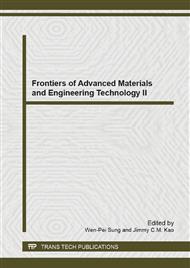p.960
p.964
p.968
p.972
p.976
p.981
p.989
p.994
p.998
Grinding Hyperboloid Part by Bending Method
Abstract:
In view of the machining difficult problem of hyperboloid, a new method is presented that high speed lapping hyperboloid parts using the bended lapping tool, and the principle of high speed lapping by the bending method is discussed. The mathematical model of bended lapping tool has been established using mechanics and higher mathematics, and the expression of width function of lapping tool is deduced. Analysis of the calculating example indicated that this method is possible to design the needed lapping tool. The bending experiment of lapping tool has confirmed the feasibility using this method, the biggest error of face shape was 1.0038μm, the face shape precision can satisfy the majority part request.
Info:
Periodical:
Pages:
976-980
Citation:
Online since:
April 2014
Authors:
Keywords:
Price:
Сopyright:
© 2014 Trans Tech Publications Ltd. All Rights Reserved
Share:
Citation:


